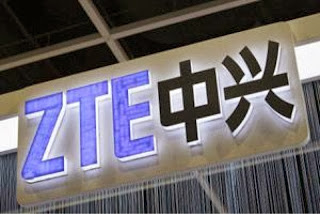News item: Apple denies that it co-operated with the U.S. National Security Agency to help spooks track and monitor calls, text messages and emails on the company's iPhones.
Apple's denial echoes an earlier one from Google, which dominates Internet search software, and another from Cisco Systems, whose devices route digital traffic.
Meanwhile, security experts in the U.S. complain about backdoors pervasively embedded in hardware, creating what has been called "the problem from hell." MIT Technology Review reports devices can be controlled remotely, even when turned off.
The German news magazine Der Spiegel says hard-drives from Western Digital, Seagate, Maxtor and Samsung, network gear from Cisco and Huawei, and Dell servers have all been compromised.
Oh, and Windows users - automated crash reports from your computer to Microsoft are reportedly being intercepted and used to find vulnerabilities in your system.
Happy New Year! Who knew that the Year of the Horse meant the Year of the Trojan? According to news reports, the backdoor exploit possibly installed on your iPhone could empower spooks to turn on its camera and microphone. Your phone could then be deployed to remotely monitor whatever or whoever happens to be in the device's viewing and hearing range.
The ability to remotely clone your phone's SIM card - enabling calls and text messages by other people impersonating the original phone - already exists.
Yes, yes, I know, you're Canadian and the story was about American phones. But considering that Canadian agencies spy on behalf of the Americans or invite them to snoop here, there and everywhere, you might as well be American.
Globally, about 1.5 billion people own smartphones - more than half of all Canadians have one. Almost 90 per cent of adult British Columbians under the age of 35 have a smartphone. Nearly 60 per cent of us under 55 own one. Not only that, we use them like maniacs - and I choose the colloquialism carefully.
Almost half of us keep our phones with us day and night. The average smartphone user keeps it within reach 17 hours a day. On average, we check them every 9.6 minutes.
Half of us check our phones compulsively while doing something else - obsessively watching back seasons of Fringe (that's the weird science show about techno crime and parallel universes) while attending movies, driving, or having romantic dinners (next time you're dining, observe how fast and furtively the smartphones come out as soon as the significant other departs for the washroom - if you can find a moment between checking your Twitter feed or a quick round of Candy Crush, of course).
All of which creates vast potential for strangers looking and listening in a lot of places. Including places you might find uncomfortable, especially if, like this iPhone owner, you are still a bit prudish about a few things.
I don't propose to go any further here, this being a family newspaper. I'm sure your imagination can unravel the risks of keeping your spook-empowered smartphone within reach at all times.
If celebrities thought they had problems with stalkers stealing selfies and files intended only for, like, you know, "private" sexting sessions with heiresses or New York politicians, this promises a whole new context for complaints about "butt dialing" and autocorrect.
From now on, unless you are an exhibitionist - hey, I don't judge - you might want to stick that smartphone in a soundproof box and put it in a drawer when you retire for the night.
What was Lord Chesterfield's 18th-century reflection regarding personal intimacy? The pleasure is momentary, the position ridiculous, and the expense can be damnable.
It is the ridiculous part that should concern iPhone users, especially the prospect of the ridiculous bits becoming the subject of amused conversation among a bunch of sociallyinept techno-spooks chowing down on late-night pizza in some security bunker in Moscow, Beijing or Washington. Yeah, like, that never happens, right?
Sorry, gotta go. My iPhone is vibrating. And it's looking at me kind of funny. Don't call me. And I won't call you. But if I do, assume it's my clone.
Posted by www.anymobilesmartphone.co.uk














